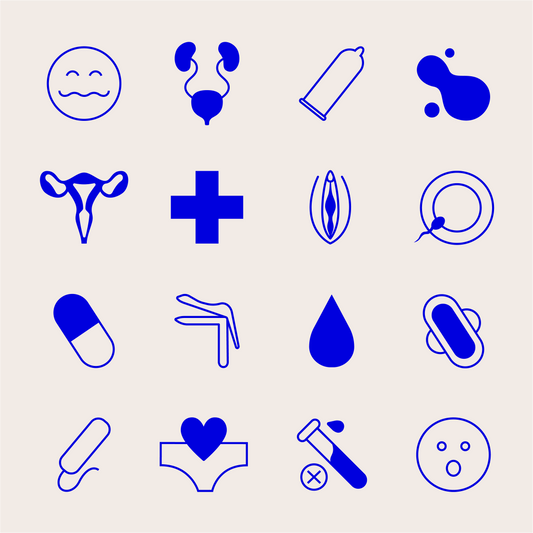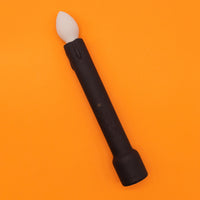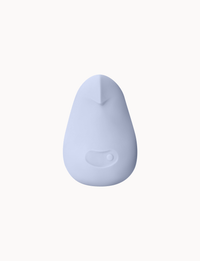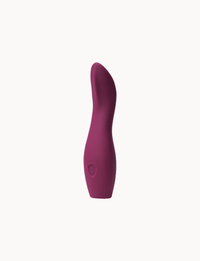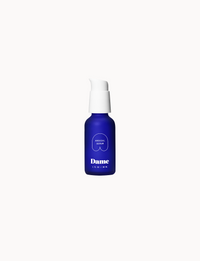Alexandra Fine, Credentialed Sexologist, M. Psych | Written by Dame
Why Do People Have Orgasms? | What Happens During An Orgasm | Types of Orgasms | For Vulva-Havers | For Penis-Havers | "Can't" Orgasm? | Orgasms Are Healthy
Many people have achievable goals: career success, starting a family, finding personal happiness.
Others have goals which may be a stretch, or even a dream: climbing Mount Everest, winning a Nobel Prize, becoming a billionaire.
Where does “experiencing an amazing orgasm” fit into that spectrum?
For a surprising number of adults, just having an orgasm may be a dream. Statistics have regularly shown that climaxing isn’t a given for many people, particularly those with vulvas.
A very large 2018 survey of American adults, for example, showed that “heterosexual and bisexual women” only reach orgasm about two-thirds of the time when they’re sexually intimate. By comparison, 95% of “heterosexual men” reported climaxing often or always; those who identify as “lesbian” or “gay” fall somewhere in the middle. And there are studies reporting that some ten percent of vulva-havers have never experienced an orgasm.
Not all orgasms are created equal, either. Putting aside the obvious – that clitoral orgasms and vaginal orgasms usually feel very different, as do penile and prostate orgasms – not everyone is satisfied with the climaxes they achieve. That’s not just because some people don’t “know what to do with what they have” – in some cases, it may be due to physiology.
Many sex therapists have claimed over the last century that vulva owners are less likely to describe their orgasms as “satisfying” if their vagina and glans clitoris (the external part of the large organ most people refer to as the “clitoris”) are physically separated by more than a couple of inches.
This can all be summed up by two very scientific conclusions. First, there’s no guarantee that sex will result in an orgasm; second, some orgasms ain’t that hot.
But you probably already knew that. You’re more likely interested in that “amazing orgasm” we mentioned at the start.
Let’s figure out just how those happen, and what you can do to increase your chances of experiencing one. Maybe even more than one.
Why Do People Have Orgasms?
Obviously, orgasms are what result from effective physical sexual stimulation. (At least in most cases, since climaxing is the usual goal of sex.)
But if achieving orgasm just depended on a simple equation – proper stimulation equals orgasm – that doesn’t explain the nocturnal emissions (wet dreams) that mystify maturing teenage boys, or the exercise-induced and spontaneous orgasms sometimes reported by vulva owners. Nor does it explain why even experienced lovers sometimes end up apologizing to their partner after a “disappointing” play session.
That’s because another organ plays a role: the brain. Most people aren’t able to successfully climax without being in the right mood – whether that mood stems from external stimuli like incense and candles, arousing fantasies, reading erotic stories, watching porn, or simply being completely turned on by a partner. In fact, there have been case studies showing that people paralyzed below the waist can have orgasms.
In other words, orgasms aren’t simply physical for most people; there’s an enormous mental component as well. And a major survey of research shows that the central nervous system is a key player in the ability to achieve orgasm.
The legendary sex researchers Masters and Johnson observed both the mental and physical components of climaxing, in order to create their influential theory of the sexual response cycle. In a nutshell, it involves four states:
- Sexual Excitement: Sexual arousal induced largely by urges and fantasies
- Plateau: A heightened state of excitement created by foreplay and physical stimulation
- Orgasm: The peak of sexual pleasure
- Resolution: The resulting feelings of well-being and relaxation.
Other sexologists have proposed modified versions of the Masters and Johnson cycle, but they all largely agree on the necessary components – and they all agree that much more than genital stimulation is involved.
It’s known that the part of the brain which controls decision-making and reason slows down during sex, and that pleasure and “bonding” hormones (like endorphins, dopamine and oxytocin) are released. But the intricacies of the relationship between mental stimulation and orgasm are still not fully defined.
The body’s physical response to sexual excitement, however, is more easily understood.
What Happens to the Body During Orgasm
Here’s a physiological description of orgasm: “the release of pelvic vasoconstriction and neuromuscular tension most often felt locally in the genital area and experienced as pleasurable in the brain.”
What does that actually mean?
- Pelvic vasoconstriction means that genital tissues fill with blood, and swell as a result. We’ve all had that experience when we’ve become aroused; the best example is a penis-haver’s erection, but the glans clitoris and the labia in vulva-havers also engorge with blood during excitement and stimulation.
-
Neuromuscular tension during sex involves the involuntary contraction of muscles in and around the genital area, often called myotonia. Some scientists say there are between 8-12 contractions during the “average” orgasm, less than a second apart at the start and coming faster and faster until the climax is over. Others say that penis owners’ orgasms can last as long as 30 seconds, and vulva owners’ for as long as 51 seconds.
No matter how long they last, we’re all familiar with those shaking and quivering feelings as we approach and reach orgasm. And it’s not only the genitals that are affected; responses throughout the body, including involuntarily vocalizations and the infamous “O face,” are results of neuromuscular contractions during climax.
So during orgasm both of those physiological reactions reach their peak, and then ease throughout the resolution phase. Put more simply: the shaking subsides, the genitals return to their pre-arousal state, and feelings of relaxation and well-being takes over as the body is flooded with post-coital hormones.
There’s a lot more that happens during orgasm, of course. Most notable are the increases in heart rate and blood pressure, as well as shallow breathing. And in those with penises, semen that’s been produced in the testicles and prostate gland is pushed through the urethra and ejaculated by the muscle contractions.
Orgasm requires a complicated interaction between bodily systems – perhaps the most pleasurable interaction that humans experience.
There’s one problem with this relatively-brief summary, however. It implies that all orgasms are the same. And they’re definitely not.
The Many Types of Orgasms
Ask the average person to name the different types of orgasms that can be experienced, and they’d probably come up with three: clitoral, vaginal and penile. If they’ve done some research on the subject or are sexually adventurous, they’d probably add anal orgasm to the list.
Before we get to a detailed list of the “types of orgasms” that exist, though, it’s important to realize that even sex experts often disagree on subjects like these – and have disagreed for a long, long time.
Here’s one example: the question of whether clitoral and vaginal orgasms are really the same.
Way back when, Freud realized that vulva-havers could have either clitoral or vaginal orgasms (or both), but he theorized that climaxing through clitoral stimulation was a sign of psychosexual immaturity. Orgasms produced by vaginal intercourse signified having achieved “adult female sexuality.” Public acceptance of his conclusions, and the many others based on it, is believed to have led to the feelings of inadequacy often felt by vulva owners unable to climax vaginally.
That’s particularly noteworthy, since studies continually show that only a relatively-small percentage of vulva owners are able to have an orgasm solely through vaginal stimulation. Most also require or prefer clitoral stimulation during penetrative sex.
It wasn’t until the mid-1960s that Masters and Johnson brought public attention to that fact that the clitoris really matters, too. They were among the first to claim that most climaxes among vulva-havers are really clitoral orgasms, since the clitoris extends into the body well beyond the glans clitoris; they believed the majority of “vaginal orgasms” were really caused by the penis stimulating the internal clitoris through the vaginal wall.
That kicked off an enormous debate among physiologists, sex researchers (and even feminists) which continues today. Some experts still insist there can be no such thing as a vaginal orgasm, because there’s very little in the vagina that could stimulate a climax. The “discovery” of the g-spot and g-spot orgasms added more fuel to the fire, since it’s located inside the vagina – but has been shown to be connected to the internal clitoris.
Without a universally-accepted resolution to the question, perhaps the best common-sense answer was revealed in a discussion between six scientists who debated the issue for the Journal of Sexual Medicine. Their takeaway: vulva-havers have the capacity to experience several different types of orgasms, but not all of them do.
Hopefully, that’s made the point that this is all subjective. If not, here’s an actual excerpt from a reputable study published in the Archives of Sexual Behavior, which found there were four types of “female orgasms”:
“…‘good-sex orgasms’ received higher pleasure and sensation ratings…‘not-as-good-sex orgasms’ received lower ratings.”
So enough of what scientists think; we can probably do better than “good-sex orgasms” and “not-so-good-sex orgasms.” Let’s come up with our own list.
For Vulva-Havers
Types of Orgasms
Believe it or not, there are eight different categories of “female orgasms” that vulva owners can enjoy – although not all of them are common occurrences.
- Clitoral Orgasm: This is the type of climax most common among vulva-havers, whether it’s induced by masturbating, oral sex or another form of partner play. Surveys regularly show that clitoral stimulation lets “women” experience orgasm as much as 80% of the time.
- Vaginal Orgasms: This umbrella term covers more than one “type” of sexual satisfaction: climaxes induced by vaginal penetration that stimulates nerve endings inside the vagina, and orgasms produced by stimulating the g-spot or the a-spot (higher on the vaginal wall than the g-spot). In any event, surveys conducted by sexual health researcher Debby Herbenick and many others continually show that only about 20% of vulva-havers can experience orgasm solely through intercourse or vaginal play.
- Blended Orgasm: The majority of vulva owners who climax during vaginal penetration say they need or prefer clitoral stimulation at the same time – and a “blended” climax can be much more satisfying than just clitoral or vaginal orgasms by themselves.
- Cervical Orgasm: We’re now into “less common” territory. The cervix is the opening of the uterus, located at the very end of the vaginal canal. And some people can experience cervical climaxes when a penis or sex toy penetrates “all the way.” Deep penetration really stimulates just the outside part of the cervix known as the octocervix; some find it painful, but others find it orgasmic.
- Urethral Orgasm: Yes, some vulva-havers can actually experience orgasm by stimulating their pee-hole in the same way they’d stimulate their glans clitoris. How is that possible? The urethra is almost completely surrounded by parts of the internal clitoris, making it extremely sensitive and causing it to engorge with blood when caressed. In fact, stimulating the urethra (or the u-spot, as it’s sometimes called) is often the best way to produce squirting (“female ejaculation”).
- Anal Orgasm: It’s a common misconception that only penis owners can achieve orgasm during anal sex. Those with vulvas can have them too. Some get excited enough to climax just from stimulation of the anal sphincter, since there’s a ring of nerve endings around the opening of the anus. A more powerful anal orgasm is sometimes possible via penetration, though, particularly by hitting the anal wall close to the g-spot or a-spot with a vibrator or dildo (or of course, a penis).
- Erogenous Zone Orgasms: Not all orgasms are triggered by genital play. If you think about the sexual desire that can be triggered by stimulation of other erogenous zones, it shouldn’t be shocking that some lucky vulva owners can actually experience “kissing orgasms” or “nipple orgasms.” The latter actually make a good deal of sense, since a study done by psychologist Barry Komisaruk at Rutgers University has found that the brain processes genital and nipple stimulation in similar ways.
- Other Types of Orgasms: Also in the uncommon category are climaxes totally unrelated to sexual activity or sexual encounters. They include coregasms (exercised-induced orgasms brought on by contractions in the pelvic floor muscles), sleep orgasms (apparently stimulated by “sex dreams”) or thinkgasms (climaxes triggered simply by erotic thoughts).
Not included in this list are multiple orgasms. They aren’t a specific type of climax, since they can be experienced in more than one area of the genital region. But vulva-havers are much more likely to have multiple orgasms than penis-havers, since the latter usually have to wait until the “refractory period” is over and they can become aroused again.
How to Experience Orgasm
It’s unlikely that anyone reading this article is still looking to achieve their first orgasm, but it’s possible. Surveys have shown that many vulva owners rarely or never reach climax during penetration, and that about 10% have never enjoyed an orgasm in their sex life.
Before we get to tips for different types of orgasms, here are some suggestions that will make the road to sexual paradise a little easier to follow.
- Get comfortable: This just doesn’t mean physical comfort; it also means being comfortable with yourself and your sexuality. Many of us have negative attitudes about our body or about sex play in general, which can interfere with enjoyment and satisfaction.
- No pressure: The biggest obstacle to achieving a goal is often the pressure to achieve it. The real goal is simply to feel good, or in the words of pioneering sex researcher Beverly Whipple (who’s credited with discovering the g-spot): “The definition of orgasm is what a woman says is an orgasm.” Take your time and don’t pressure yourself to climax. Let it just happen.
- Relax and Focus: Those aren’t really contradictory. Your body and mind should be relaxed; that may call for soft lights, candles or your favorite music. However, you should be focused on the moment, without letting yourself be distracted by thoughts of upcoming work obligations, financial issues, or other real-world problems.
- Explore: Before you can achieve the ultimate orgasm, you need to know your body and what makes you feel good. Try different motions, different positions, and stimulating different areas of the vulva and other erogenous zones to figure out what your body likes best. Even moving your hips or shifting your weight slightly can make a big difference in what you feel.
- Foreplay and Communication: If you’re with a partner, don’t skimp on the foreplay; the more sexual tension and excitement you experience, the greater the chance you’ll climax. And telling your partner when something is (or isn’t) working for you – just as they should tell you the same thing – can make a huge difference in how well the two of you work together in bed.
- Exercise: This is a longer-term suggestion. Many vulva-havers have found that strengthening their pelvic floor muscles with Kegels or other core exercises can make it easier to climax.
Now that you’re good and ready, let’s briefly look at ways to achieve the most common types of orgasms.
Clitoral Orgasms
Most people find it easiest to climax by stimulating the glans clitoris, but everyone’s body reacts differently. Try up-and-down or circular stimulation, flicking or tapping, or a combination of them all. You’ll quickly realize which motions feel best. You may also find that one side of the clitoris is more responsive than the other.
As blood flows to the genitals the glans may become too sensitive for direct stimulation, so you can play with the vulva or clitoral hood instead. Some people respond better to fingers and others to vibrators – and there are lots of different vibrators you can try. Finally, some vulva owners find that oral sex will bring them to clitoral orgasm more quickly (and more satisfactorily) than manual play.
Vaginal Orgasms
There are only a limited number of nerve endings inside the vagina, which is why so many vulva-havers need additional stimulation in order to climax during penetration. In-and-out motion may feel good, but it often just isn’t enough; using a swirling motion that starts at the vaginal opening and gradually goes deeper, or alternating between slow thrusts and fast pumps, will be more likely to do the trick.
Contacting the vaginal walls also increases the possibility of stimulating the g-spot or a-spot. The g-spot is about 2-3 inches inside the vagina on the wall facing the belly, and the a-spot is a couple of inches further up. As we’ve discussed, many “women’s health” experts believe that vaginal orgasms are actually produced by stimulating the clitoris by hitting one of those two internal erogenous zones. You’ll have to curl your fingers to reach the g-spot, but there are a number of g-spot vibrators which make it easier to experience one of those mind-blowing sexual experiences.
Different positions during intercourse can help as well. Doggy style, cowgirl, “lifted” missionary (with pillows under your butt) and “spooning” are among the positions that may increase the likelihood of reaching orgasm.
Blended Orgasms
A combination of fingers or toys – used in the right way, of course – can produce blended orgasms, particularly in partner play. However, sex toys like the rabbit vibrator are designed to stimulate both the clitoris and vagina simultaneously – and many vulva-havers wouldn’t dream of living without one.
Blended orgasms don’t always mean sticking to the vulva, though; for example, climaxing at the same time with a g-spot vibrator and a butt plug, or a rabbit vibrator and nipple clamps, may send you right to the moon.
Anal Orgasms
Two important warnings: standard sex toys are too wide to fit into most anal passages comfortably. If you’re not using fingers, always use a dildo or vibrator specifically designed for anal play. And the anus does not produce any sort of lubrication on its own, so always use lots of lube.
It’s best to start slowly if your final goal is an anal orgasm. Play around the opening at first, either with digital stimulation or by trying rimming (anal oral sex) with a partner. The next step could be using a small vibrating butt plug or just one finger to explore, eventually going deeper (after applying more lube) with several fingers or a toy. The best sensations will come with deep penetration, best accomplished with a partner through doggy-style or riding positions.
For Penis-Havers
There are two common types of orgasms that those with penises can experience.
Penile orgasm
This is what usually comes to mind when people think of the “male orgasm.” Most penis owners ejaculate as a result of this type of climax, but not all do – at least not every time. In some cases, there’s simply no ejaculate produced (that’s called a “dry orgasm”). But those who’ve practiced control of their pelvic floor muscles can actually stop themselves from ejaculating by what’s known as “edging,” going right to the edge of orgasm but stopping just before shooting. Experienced orgasm-havers say that edging produces an amazing climax when they finally decide to let go.
Penis owners who are particularly sensitive to stimulation may sometimes be able to reach orgasm from massage of the scrotum or frenulum, in addition to the head and shaft of the penis.
Prostate orgasm
Even more amazing, if you speak with penis-havers who’ve had the pleasure, is a prostate orgasm. The prostate gland, sometimes called the p-spot, is located about halfway up the anal passage (on the “genital side”). It’s absolutely loaded with nerve endings but only accessible from inside the rectum, so it takes patience and slow exploration to locate and stimulate the p-spot.
The effort is worth it. The orgasm that can be produced is not only extremely intense, but creates more of a full-body experience than a penile orgasm. Prostate orgasms are sometimes called “prostate milking,” because of the somewhat-watery fluid that can flow from the penis after the big moment. Some refer to it as “prostate massage,” but that term is also used for therapeutic massage that’s sometimes used to treat prostate inflammation.
It’s possible to pleasure the prostate externally through the perineum (the “taint” between the genitals and anus), although most prostate owners will find it difficult to actually orgasm that way. Some may also be able to experience climax simply from anal sex without hitting the p-spot, but again, that’s a rare occurrence.
One final note: there are reports of easily-orgasmic penis-havers reaching a climax simply from stimulation of erogenous zones like the nipples, and there have even been cases of “thinkgasms.” Those are definitely more common among vulva-havers, however.
What If You “Can’t” Orgasm?
There are several reasons why people may be unable to reach orgasm.
In some cases the issue is physical in nature. Underlying health conditions or certain medications can make it difficult or nearly impossible to climax, or even to fully enjoy sexual excitement. That type of sexual dysfunction is called anorgasmia. A health professional can often diagnose the issue and provide a solution.
In other cases the problem is psychological, and seeing a mental health specialist may help resolve issues that may prevent normal sexual function.
Other problems can inhibit sexual satisfaction and orgasm as well. They include overuse of alcohol or drugs, personal or social issues which become distractions, or lack of honest communication with a partner. The solutions for some of these issues are probably obvious, but speaking with a counselor may help with their resolution.
Finally, some who are unable to reach orgasm are simply not overly sensitive to sexual stimulation, and haven’t yet discovered the right techniques to put them over the top. Hopefully, this guide will help. If not, a sex therapist can often help clients unlock the hidden potential in their sex life.
Orgasms Are Healthy
A number of studies have shown that regularly experiencing orgasms can actually provide health benefits in addition to sexual satisfaction.
It’s been found that vaginal intercourse resulting in orgasm is strongly associated with overall sexual, mental and physical wellness, as well as healthier interpersonal relationships. Masturbation to climax has been shown to provide a level of pain relief for vulva-havers (and not simply because orgasm serves as a distraction). Regular orgasms have even been linked by research to better heart health, and a reduced risk of prostate cancer in penis-havers.
Bottom line: orgasms don’t just feel great, they’re good for you as well. That’s something you should remember, the next time you’re feeling horny.



